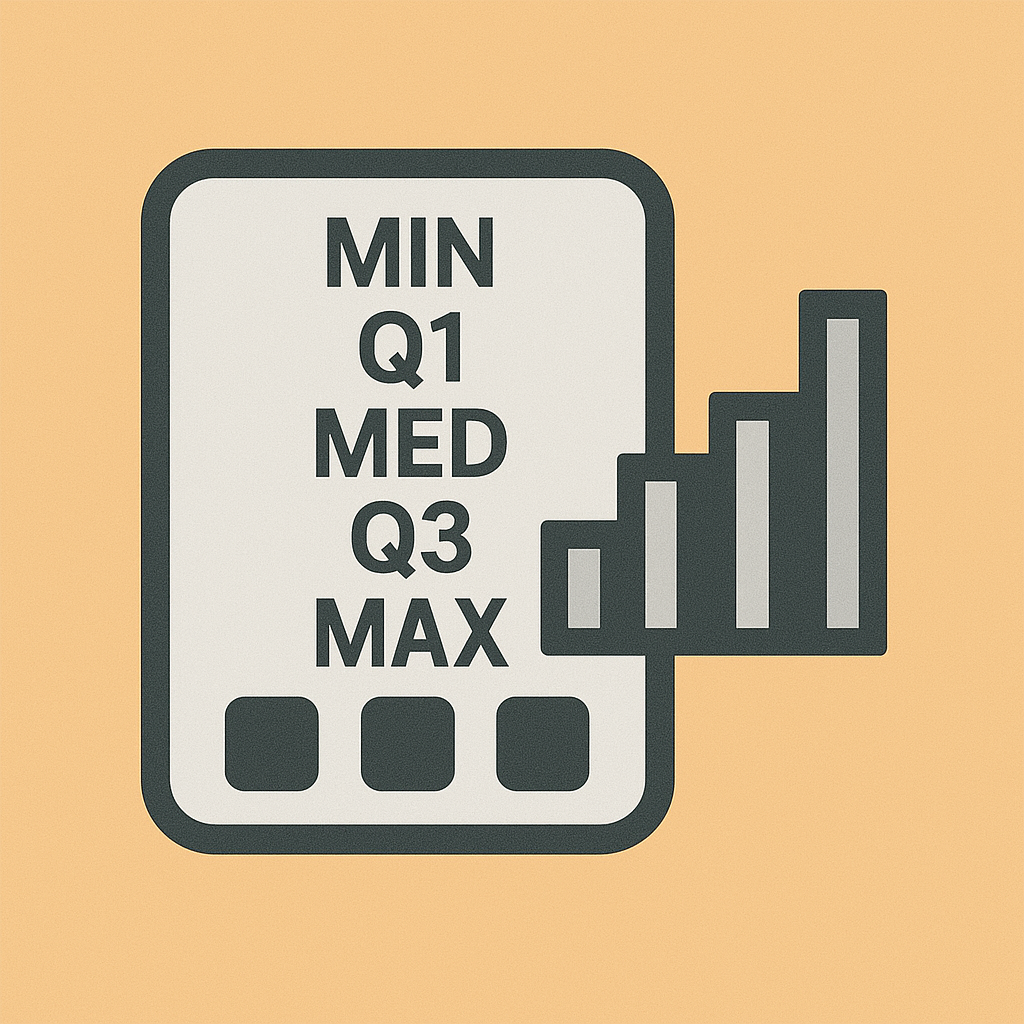Identifying outliers is a crucial part of statistical data analysis. Outliers can skew averages, standard deviations, and even the interpretation of trends in the data. A highly effective and commonly used technique for identifying outliers is the Interquartile Range (IQR) method, which helps in defining upper and lower fences, i.e., boundaries that indicate the bounds of typical data values.
What are the upper and lower fences?
In statistics, fences are boundaries that are used to determine whether a data point is an outlier.
They are based on the Interquartile Range (IQR), which measures the spread of the middle 50% of the data.
- Lower Fence (LF): The boundary below which data points are considered potential outliers.
- Upper Fence (UF): The boundary above which data points are considered potential outliers.
These fences help define the “normal” range of your dataset. Anything beyond these boundaries is classified as an outlier.
What is an Outlier?
An outlier is a data point that significantly differs from the other observations within a dataset. It might be exceptionally high or low relative to the rest of the values.
Outliers can arise due to the following reasons:
- Data entry errors
- Measurement inaccuracies
- Natural variability in the data
- Exceptional events or anomalies
Understanding and identifying outliers is essential for ensuring data accuracy and for making reliable statistical inferences.
The Use of Fences in Statistics
Fences are primarily used in:
- Box plots: In a box plot, the box represents the interquartile range (from Q1 to Q3). Fences are used to visually show the range of data and identify outliers.
- Data cleaning: to remove or flag anomalous data before analysis.
- Statistical modeling: to improve the reliability of regression or machine learning models.
How to Calculate Upper and Lower Fences
To calculate the fences, you first need the Interquartile Range (IQR), defined as:
IQR = Q3 − Q1
Where:
- Q1 = First quartile (25th percentile)
- Q3 = Third quartile (75th percentile)
Once you have the IQR, use the following formulas:
Lower Fence (LF) = Q1 − (1.5 × IQR)
Upper Fence (UF) = Q3 + (1.5 × IQR)
Any data point:
- Less than the Lower Fence is a low outlier
- Greater than the Upper Fence is a high outlier
Example of how to calculate the Upper and Lower Fences
Let’s take an example dataset:
Data: 2, 4, 6, 8, 10, 12, 14, 18
- Find Q1 and Q3:
- Q1 (25th percentile) = 5
- Q3 (75th percentile) = 13
- Calculate IQR:
IQR = Q3 – Q1 = 13 – 5 = 8 - Lower Fence:
LF = Q1 − (1.5 × IQR) = 5 − (1.5 × 8) = 5 − 12 = −7 - Upper Fence:
UF = Q3 + (1.5 × IQR) = 13 + (1.5 × 8) = 13 + 12 = 25
Result:
- Lower Fence: –7
- Upper Fence: 25
All data points within this range (–7 to 25) are considered normal, while any value outside it would be treated as an outlier.
How to find Upper and Lower Fences with our Calculator
- Enter the data values separated by a comma, space, or a new line.
- Choose the Fence multiplier, i.e., 1.5 times IQR, 3 times IQR, or any custom value.
- The tool automatically finds Q1, Q3, and IQR.
- It instantly computes the Upper and Lower Fences.
- It highlights which data points are outliers.
Conclusion
Outliers can reveal important data trends or point to data quality issues. By understanding how to calculate and interpret upper and lower fences, you can improve the accuracy of your data-driven decisions. Whether you’re analyzing exam scores, financial data, or experimental results, identifying outliers correctly is a key step toward trustworthy statistical insights.







